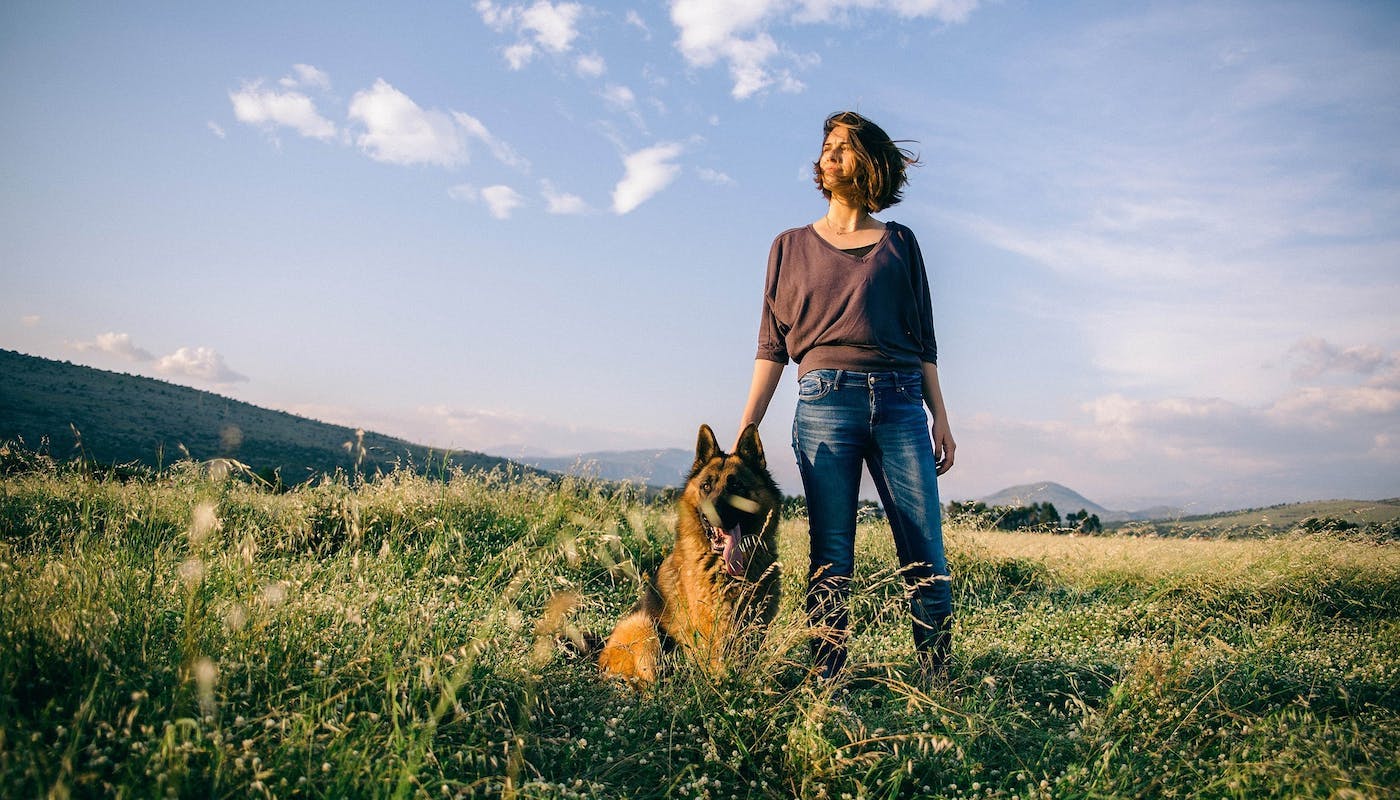Why Does My Dog Protect Me?
Does your dog place himself firmly between you and a stranger? You’re not alone. Discover why your dog protects you – and how you can effectively train and manage this behavior.
What Makes My Dog Protect Me?
Dogs are pack animals, which means they’re wired to protect pack members – especially when they are unwell or weak. A pack is stronger together, so healthy members will guard the others. Your family dog might be particularly watchful over babies, children, and pregnant women.
Did you know? The US Department of Defense employs military dogs, breeding 50-90 every year. They’re raised by foster families up until they’re around 6 months old. After an intensive puppy training course, the best dogs are accepted into the Military Dog Training Program. They build a bond with their handlers and work in different roles – watch some of them in action on the dedicated DOD pagehttps://www.defense.gov/Multimedia/Experience/Four-Legged-Fighters/!
Why Does My Dog Protect Me From My Husband or Boyfriend?
Some dogs appear to protect women from husbands or boyfriends – especially when they’re physically close. The issue might not be protection; it might be simply that your dog feels safe and comfortable with you and doesn’t like being disturbed! To modify this behavior, ask your husband or boyfriend to approach calmly and give the dog high-value treats.
Will My Dog Try to Protect Me?
Thanks to the bond you enjoy with your dog, it’s highly likely that they will try to protect or rescue you – if they can work out how to do it!
A study conducted at the University of Arizona in 2020 tested 60 pet dogs with their owners. [Watch: Video of study posted on YouTube. Don’t play this video while your dog is listening!]
In the study a large, closed box was placed in an observation room. First, researchers placed food inside the box and tested the dogs, one by one, to see whether they were able to open the door and retrieve the food. 19 out of 60 dogs managed to get the food.
Next, the researchers asked the owners to climb into a box and cry out as though they were trapped. One by one, each dog attempted to release their owner. 20 managed it – but almost all the dogs displayed signs of stress, like barking and whining. We know that if they could have done it, they would!
Can You Train Your Dog to Protect You?
It is not appropriate or legal to train your dog to attack strangers. But a highly-trained dog can be a reassuring companion. Start with basic obedience, and practice daily until your dog has a fast response to every command. Ensure that your dog has mastered these:
- Barking on command. When your dog learns to bark on command (which can be a word or a hand signal), they should also learn the signal for ‘quiet’. This gives you greater control – and an intruder or stranger, seeing that you have a highly-trained dog, is far less likely to cause a threat.
- Teach ‘leave it’. If your dog shows a tendency to become protective, you need to teach them a command to stop. (This is also useful for pups who like chasing rabbits!) Practice at home with a rolled newspaper or lower value treat, holding it out to your dog and then telling them to ‘leave it’ in return for an exciting, high value treat.
What are the most protective dogs?
The most protective dog breeds are those which have been bred for the purpose. In the past, humans depended on watchdogs and guard dogs for safety. Dobermanns, German Shepherds/learn/dog-lifestyle/the-5-smartest-dog-breeds#:~:text=similarly%20active%20families.-,3.%20German%20Shepherds,-There%E2%80%99s%20a%20reason and Bullmastiffs/learn/dog-lifestyle/is-the-mastiff-the-biggest-dog-breed were all protective breeds. If you often walk at night or you live alone, you could consider these dogs. Remember that a high level of training will be required.
Further Reading
Training basics: How to socialize a dog/learn/dog-training/how-to-socialize-a-dog. Teach them to stop guarding their food/learn/dog-training/how-to-stop-food-aggression-in-dogs. Learn how to stop your pup from biting/learn/dog-training/how-to-teach-a-dog-not-to-bite people. And, just for a smile, meet the Department of Defense’s brilliant military dogs.https://www.defense.gov/Multimedia/Experience/Four-Legged-Fighters/
